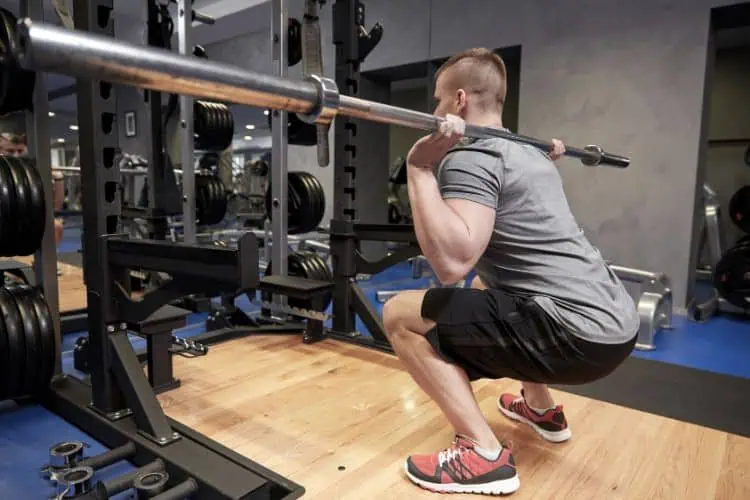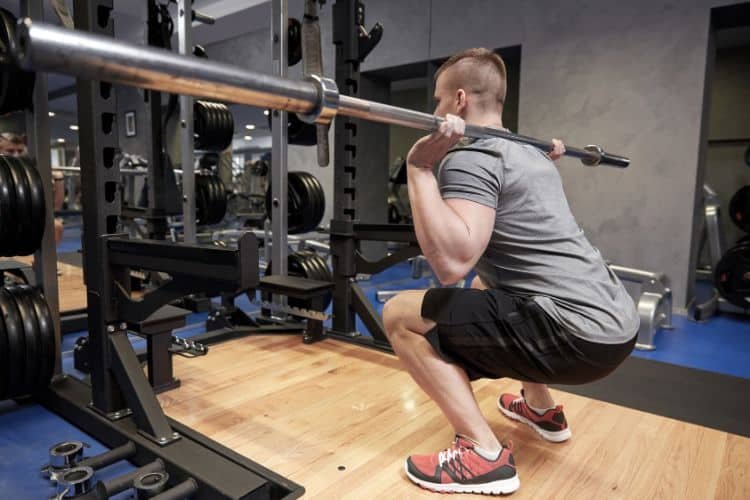
Functional training has surged in popularity as people recognize the benefits of training in ways that translate to everyday movement and real-life activities. Unlike traditional gym routines that often focus on isolated muscle groups, functional training emphasizes multi-joint, compound exercises designed to enhance strength, flexibility, and coordination. This type of workout is essential for those looking to improve their fitness holistically, making them more resilient in daily life. In this post, we’ll dive into the principles of functional training, explore key exercises, and walk you through a sample workout that you can follow.
What is Functional Training Workout?
Functional training is a type of workout aimed at enhancing the body’s ability to perform everyday tasks. These workouts use movements that mimic actions such as squatting, lifting, bending, pulling, pushing, and twisting—movements you do daily. This approach to exercise is beneficial for overall fitness, as it engages multiple muscle groups, improves coordination, and increases range of motion.
The core of functional training is based on improving movement patterns rather than just strengthening isolated muscles. By training your body in movements that align with natural biomechanics, you not only reduce the risk of injury but also build a foundation of strength and stability that benefits daily activities.
Benefits of Functional Training
Functional training offers several advantages:
- Improved Coordination and Balance: Functional exercises challenge stability and coordination, enhancing balance.
- Greater Mobility and Flexibility: Many functional exercises work within a full range of motion, which helps maintain joint health and flexibility.
- Increased Core Stability: Functional training often engages the core, leading to better stability and support for the entire body.
- Reduced Risk of Injury: By training the body to move correctly, functional training minimizes strain and injury risk.
- Enhanced Muscular Endurance: Functional workouts can include high repetitions and dynamic movements, improving muscular endurance.
Key Components of Functional Training Workout
Before diving into the exercises, it’s essential to understand the primary components of functional training. Incorporating these into your routine ensures a well-rounded workout that targets all necessary aspects of fitness.
Core Strength
The core is the foundation for most movements. A strong core helps stabilize the spine, maintain posture, and improve balance. Functional training involves many compound movements that engage the core, so strengthening this area is a key part of every functional workout.
Stability and Balance
Functional training exercises often require you to stabilize yourself, whether you’re lifting, twisting, or standing on one leg. Balance exercises engage stabilizing muscles, particularly in the hips, core, and ankles, which are crucial for overall movement control.
Range of Motion
Functional training emphasizes full range of motion, which is crucial for maintaining joint health. Movements that require stretching, twisting, and bending challenge flexibility and mobility, making it easier to move freely and without restriction.
Multi-Planar Movements
Life doesn’t happen in a straight line, so functional training includes multi-directional (or multi-planar) exercises. This means that movements occur across different planes: sagittal (forward and backward), frontal (side-to-side), and transverse (rotational).
Functional Training Workout Exercises
Here are some foundational exercises that form the basis of any effective functional training program. These exercises mimic real-life movements, challenge stability, and engage multiple muscle groups at once.
1. Squats
Squats are a fundamental movement that strengthen the legs, glutes, and core. They mimic the movement of sitting down and standing up, making them functional for daily life.
How to Do It:
- Stand with feet shoulder-width apart.
- Lower yourself as if sitting back into a chair, keeping your back straight.
- Push through your heels to return to standing.
2. Deadlifts
Deadlifts are a hip-hinging movement that strengthens the posterior chain (hamstrings, glutes, and lower back). This movement is essential for proper lifting technique, whether it’s picking up groceries or moving furniture.
How to Do It:
- Stand with feet hip-width apart, holding a weight (like a dumbbell or kettlebell).
- Bend at the hips, keeping your back straight, and lower the weight close to the ground.
- Engage your glutes and hamstrings to stand back up.
3. Lunges
Lunges are a dynamic movement that improves balance, coordination, and lower body strength. They’re particularly useful for stability and single-leg strength.
How to Do It:
- Step forward with one leg, lowering your body until both knees are at 90 degrees.
- Push back up to return to the starting position.
- Alternate legs for each repetition.
4. Push-Ups Functional Training Workout
Push-ups are a classic bodyweight exercise that strengthens the chest, shoulders, and core. They require no equipment, making them perfect for any functional workout routine.
How to Do It:
- Start in a high plank position with hands shoulder-width apart.
- Lower your body until your chest is close to the floor.
- Push through your palms to return to the starting position.
5. Planks
Planks are excellent for core stability and overall strength. They engage the entire core, including the deep stabilizing muscles, making them ideal for improving posture.
How to Do It:
- Start in a forearm plank position, keeping your body in a straight line.
- Engage your core and hold the position for as long as possible without sagging.
6. Rows Functional Training Workout
Rows strengthen the back muscles, which are essential for maintaining good posture and a strong upper body.
How to Do It:
- Hold a weight in each hand with a slight bend in your knees.
- Hinge forward at the hips and row the weights toward your ribs.
- Lower the weights back to the starting position.
7. Rotational Exercises
Rotational movements are vital in functional training, as they mimic twisting motions often used in real life. Russian twists and woodchoppers are great examples.
How to Do It (Russian Twists):
- Sit on the floor with your knees bent and lean back slightly.
- Twist your torso to each side, moving a weight or medicine ball.
Sample Functional Training Workout Routine
Here’s a well-rounded functional workout that incorporates all the essential movement patterns. This workout can be done 2-3 times per week.
Warm-Up
Before starting, it’s essential to prepare the body with a dynamic warm-up.
- High Knees – 1 minute
- Arm Circles – 30 seconds each direction
- Bodyweight Squats – 1 minute
- Leg Swings – 30 seconds each leg
The Workout
Perform each exercise for 12-15 repetitions (or 30 seconds for time-based moves) and complete 3 rounds of the entire circuit.
1. Goblet Squat
Hold a dumbbell close to your chest and perform a squat, engaging the core and pushing through the heels to stand.
2. Push-Up with Rotation
Perform a push-up, then rotate into a side plank, reaching one hand towards the sky. Alternate sides with each rep.
3. Single-Leg Deadlift Functional Training Workout
Stand on one leg, holding a weight in the opposite hand. Hinge forward at the hip, lowering the weight toward the ground while keeping your back flat. Switch legs after each set.
4. Lateral Lunges
Step to the side, bending one knee while keeping the other leg straight. This movement targets inner thighs and improves side-to-side mobility.
5. Russian Twists
Sit on the floor with your legs lifted, twist your torso to each side, holding a weight or medicine ball.
6. Bird Dogs
In a tabletop position, extend your right arm and left leg. Return to starting position and switch sides. This move improves balance and core stability.
7. Plank to Downward Dog
Start in a plank position. Push your hips up into a downward dog, hold briefly, and return to plank. This move strengthens the core and stretches the hamstrings and shoulders.
Cool-Down
Finish with a cool-down to stretch and relax the muscles.
- Cat-Cow Stretch – 1 minute
- Child’s Pose – 1 minute
- Seated Forward Fold – 1 minute
Tips for an Effective Functional Training Workout Routine
- Focus on Form: Proper form is essential in functional training. Movements should be controlled and aligned with correct biomechanics.
- Start with Bodyweight Exercises: If you’re new, begin with bodyweight exercises to master the movements before adding weights.
- Incorporate Balance and Stability Challenges: Use tools like BOSU balls or stability balls to add a balance challenge.
- Progress Gradually: As you get stronger, increase either the resistance (weights) or the duration of each exercise to continue challenging your body.
- Listen to Your Body: Functional training can be intense, so rest when needed and don’t push through pain.
Functional training workout is a powerful, versatile approach to fitness that enhances strength, stability, and coordination in ways that benefit everyday life. By focusing on movement patterns rather than isolated muscle groups, you create a balanced, resilient body capable of handling a range of physical challenges. This workout style is suitable for people of all fitness levels, from beginners to advanced athletes, making it a fantastic addition to any fitness routine.
Embrace functional training to improve your quality of life, prevent injuries, and build strength that lasts beyond the gym. Whether you’re picking up your kids, carrying groceries, or simply trying to feel better in your body, functional training can help you achieve your goals.
